The Olympics have captured the world’s attention this summer.
Some of the newer additions, like breakdancing and skateboarding, have brought fresh energy and excitement to the games, appealing to younger audiences and showcasing a broader range of athletic talents. These new sports are redefining what it means to be an Olympian.
Let’s take a look at some of the lesser-known Olympic sports.
Sepaktakraw

Originating in Southeast Asia, sepaktakraw differs from volleyball by using a rattan ball and allowing players to use only their feet, head, knees, and chest to touch the ball. The sport is renowned for its dramatic, acrobatic volleys. Athletes require flexibility, reflexes, and precise teamwork to excel.
Squash
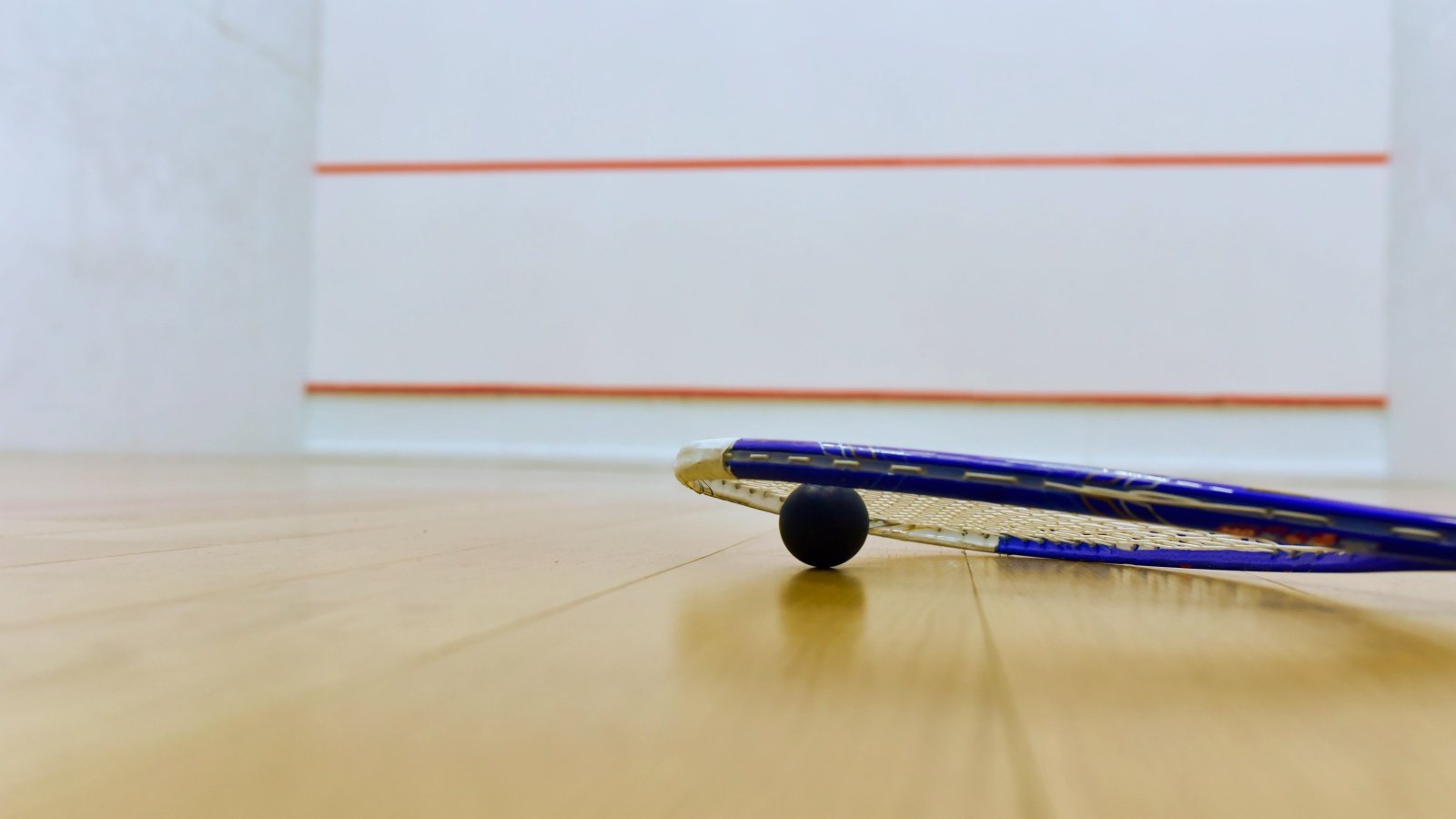
Squash involves two players hitting a small, hollow ball against the walls of a closed court. The sport originated at Harrow School in England in the 19th century. It tests players’ endurance, agility, and strategic thinking, as the game’s pace can change in an instant.
Artistic Roller Skating

Artistic roller skating involves performing jumps, spins, and dance routines on roller skates. This sport, reminiscent of figure skating, demands grace and precision on wheels. Competitors perform to music, blending athleticism with artistic expression.
Boules
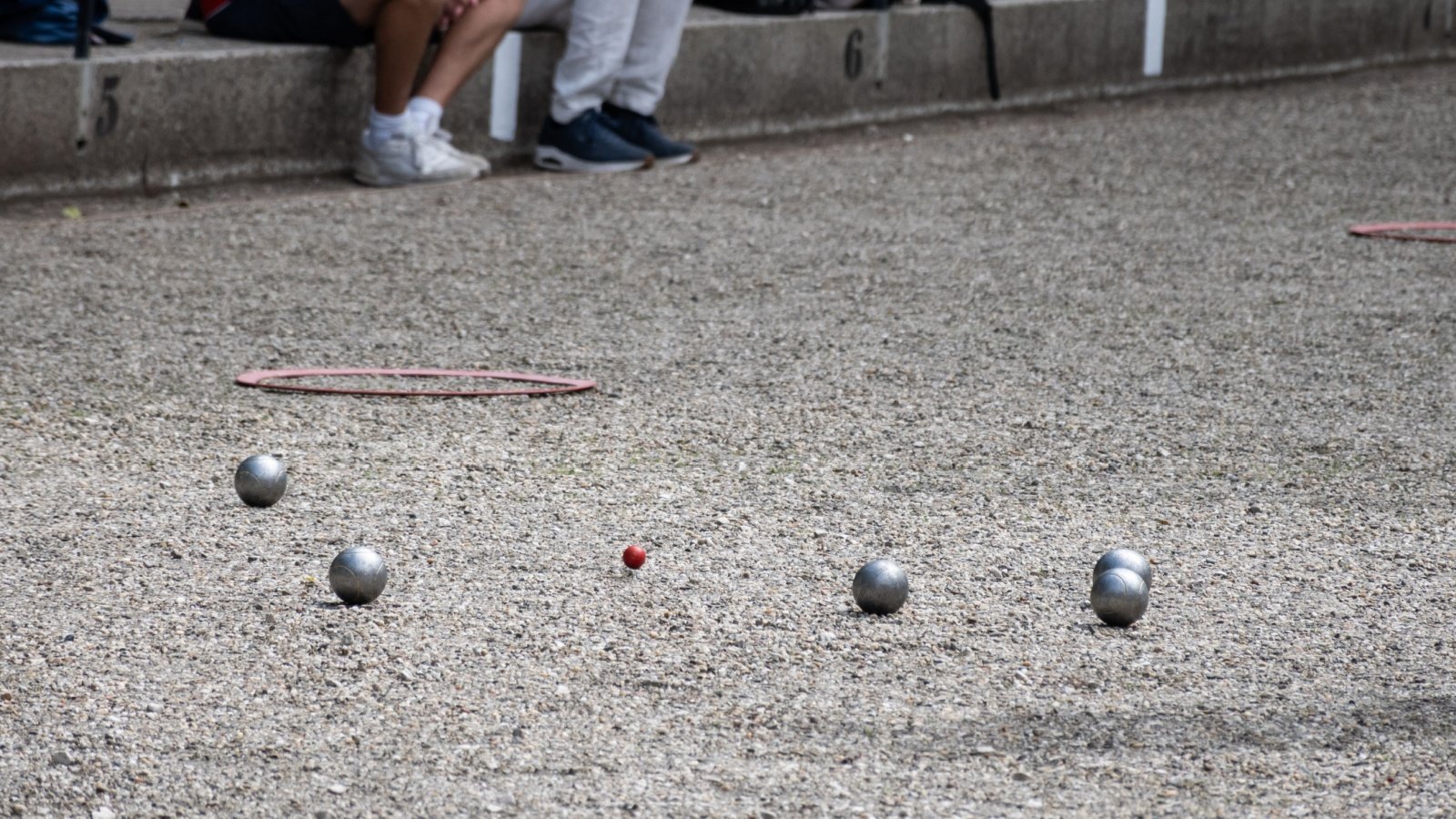
Boules, also known as pétanque, involves throwing metal balls as close as possible to a small wooden ball called a cochonnet. The sport is deeply embedded in French culture but has spread globally. It requires precision, strategy, and an ability to read the playing field.
Chess Boxing

Chess boxing is a hybrid sport that combines the cerebral challenge of chess with the physical endurance of boxing. Competitors alternate between rounds of chess and boxing, testing their strategic thinking and physical resilience. This unusual pairing was conceived as an art project and has since gained a following in Germany and Russia.
Canoe Polo

Canoe polo combines kayaking and water polo elements, where teams in canoes attempt to throw a ball into a suspended goal. The game is fast-paced and requires adept boat handling skills as well as quick decision-making. Originating in the early 20th century, it now enjoys popularity across various continents.
Fistball

Fistball is a sport similar to volleyball, where teams strike a ball over a net using their arms or fists. The game traces back to ancient Rome and has been refined in Germany over centuries. It demands great agility and precision, with the ball often reaching high speeds.
Bandy

Bandy is essentially ice hockey played with a ball on a field as big as a soccer pitch, and it predates its more famous cousin. Originating in Russia and Scandinavia, this sport requires players to skate swiftly and handle their sticks with finesse. The large playing area and fewer players per team compared to ice hockey create a distinct strategic play style.
Orienteering

Orienteering is a race where athletes use a map and compass to navigate from point to point in diverse and unfamiliar terrain. Originating as a military exercise in Sweden, the sport tests both physical endurance and mental sharpness. Competitions can vary from dense forests to urban settings, adding versatility to the challenges faced by participants.
Sport Climbing
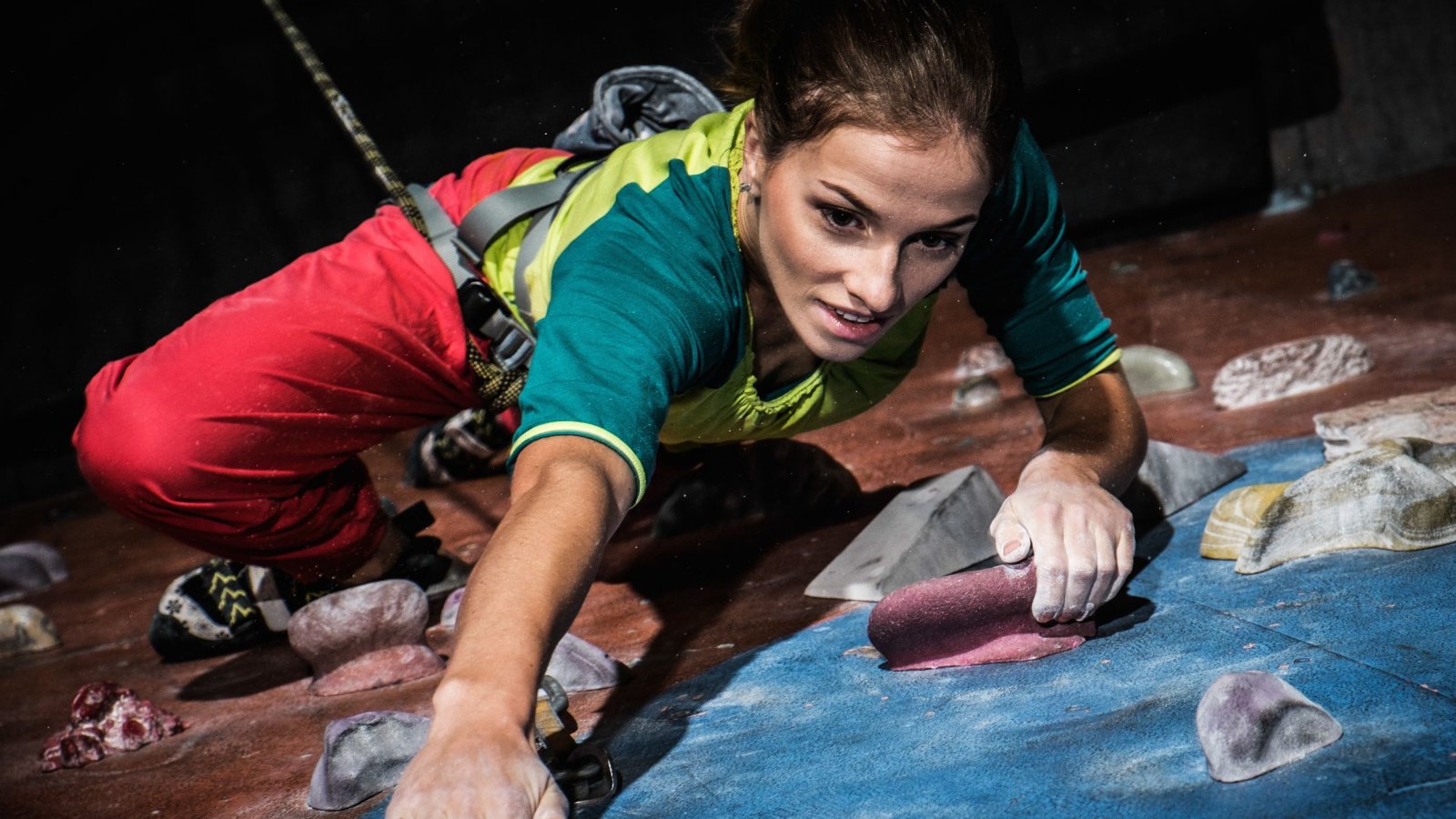
Sport climbing tests participants’ strength and precision as they scale artificial rock walls. The sport entered the Olympic scene recently, highlighting the growing appeal of climbing competitions. Athletes must master various climbing techniques and solve “problems” quickly to succeed.
Wushu

Wushu, or Chinese martial arts, showcases routines that include maneuvers from traditional combat practices and modern acrobatics. It emphasizes fluidity, strength, and rhythm, making it both a sport and an art form. Athletes perform with various traditional weapons and barehanded techniques, judged on their skill and execution.
Air Sports

Air sports encompass a range of activities, including paragliding, hang gliding, and skydiving. These sports test pilots’ abilities to control their crafts through complex aerial maneuvers and unpredictable weather conditions. Competitions focus on accuracy, choreography in the sky, and sometimes, speed.
Modern Pentathlon
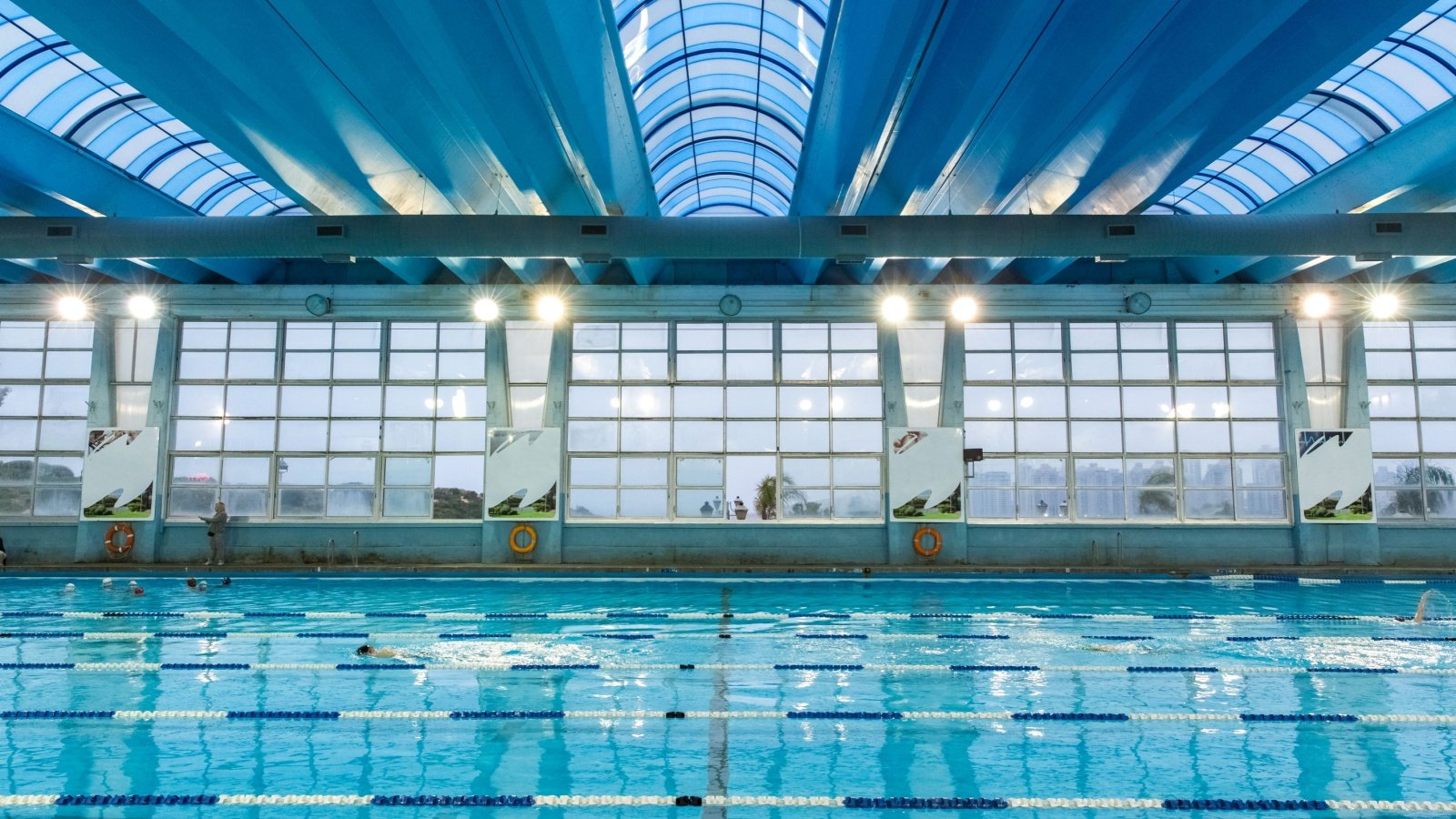
Modern pentathlon includes fencing, swimming, equestrian show jumping, pistol shooting, and a cross-country run. This sport, designed to test the skills of a 19th-century cavalry officer, requires athletes to adapt quickly between disciplines.
Racquetball

Racquetball is played on an indoor court with a hollow rubber ball. The sport, developed in the 1950s in the United States, is known for its fast pace and short, intense bursts of play. Players must demonstrate quick reflexes and strategic shot placement to win.
Water Skiing
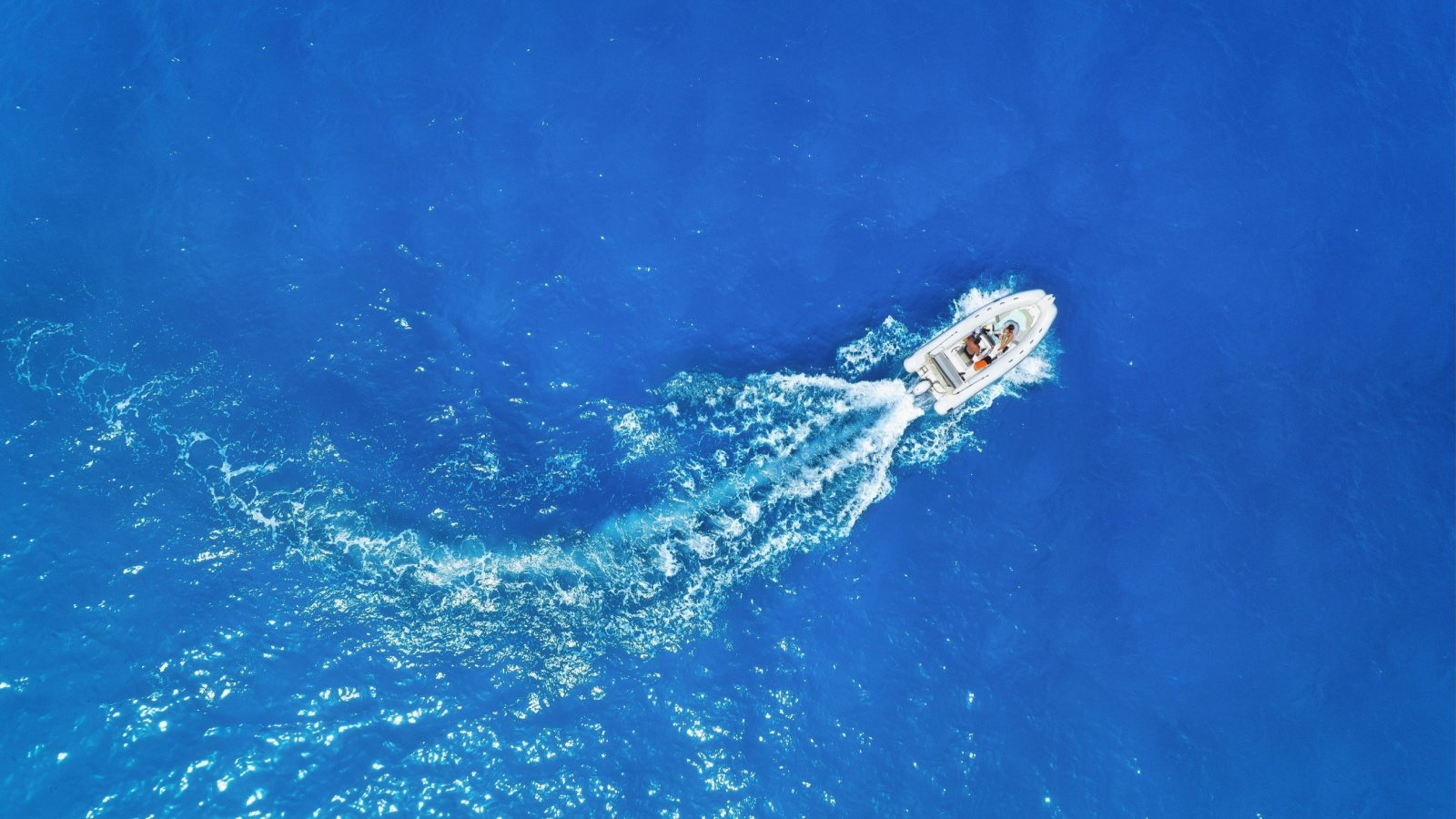
Water skiing combines speed, balance, and strength as athletes are towed behind a boat on skis. The sport has been a competitive discipline for decades, featuring events like slalom, tricks, and jump skiing.
Equestrian Vaulting

Equestrian vaulting is gymnastics performed on a moving horse. Originating as a training exercise for Roman soldiers, it has evolved into a competitive sport that emphasizes harmony between rider and horse. Athletes perform choreographed routines to music.
Underwater Hockey
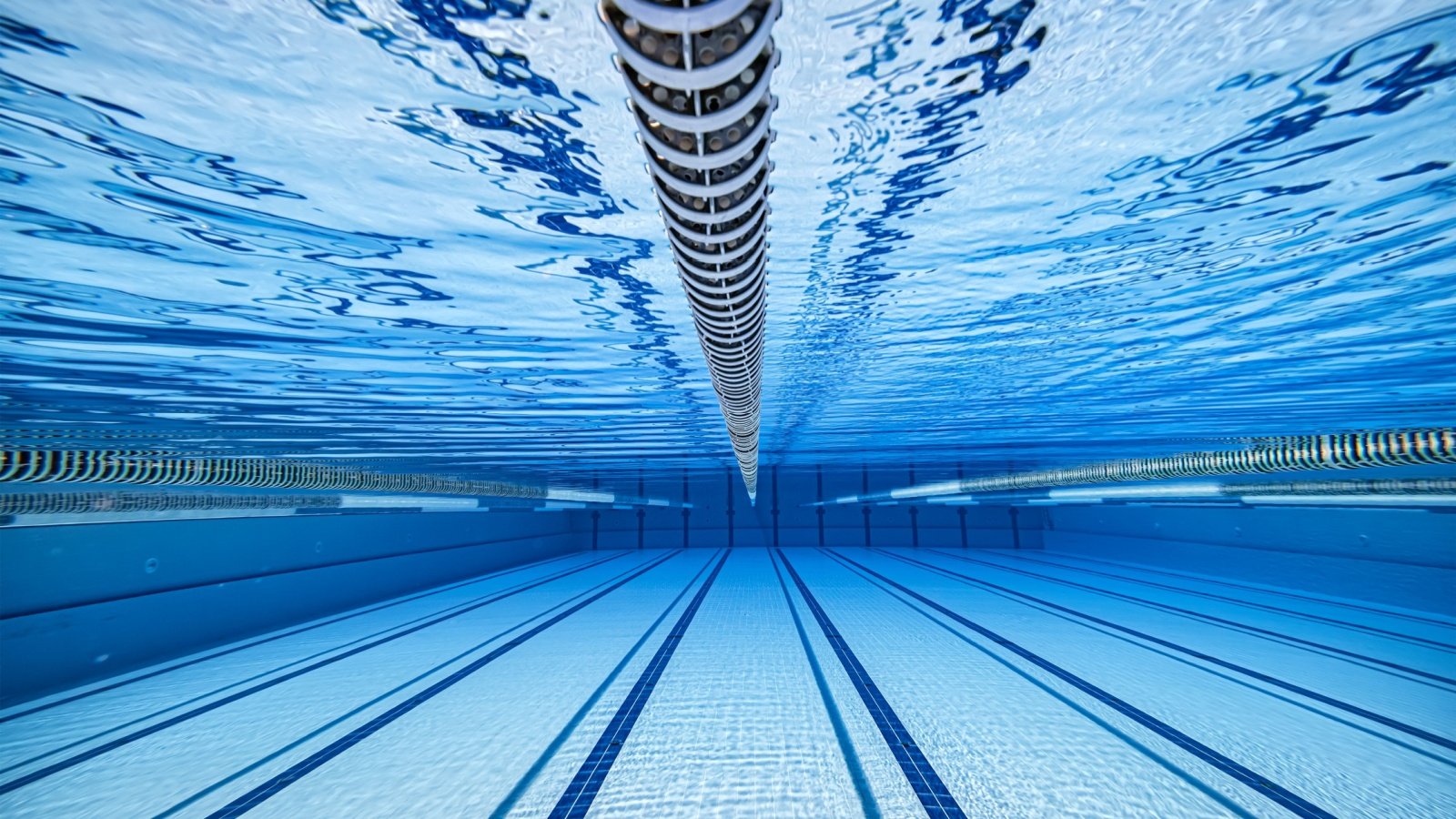
Also known as Octopush, underwater hockey originated in England during the 1950s as a means for divers to stay fit during the winter. Players push a puck across the pool bottom using a short stick, while wearing snorkeling equipment. The sport emphasizes teamwork and breath control, challenging athletes to maintain composure under pressure.
Roller Sports

Roller sports include disciplines like roller hockey, speed skating, and freestyle skating. These sports challenge athletes to maintain balance and speed on wheels. Competitions can be on tracks, in parks, or on the streets, showcasing a variety of skills and stunts.
Beach Handball

Beach handball is a variant of team handball played on sand. It originated in Italy and Spain in the 1990s and emphasizes speed and agility. The sport involves two teams that attempt to throw a ball into the opponent’s goal, with spectacular dives and jumps adding to the excitement.
Korfball

Invented in the Netherlands in 1902, korfball resembles basketball but is played with mixed-gender teams, promoting equality and cooperation. Players score points by throwing a ball into a high, basket-like korf. The sport’s inclusivity and emphasis on teamwork make it unique among competitive ball games.
Floorball
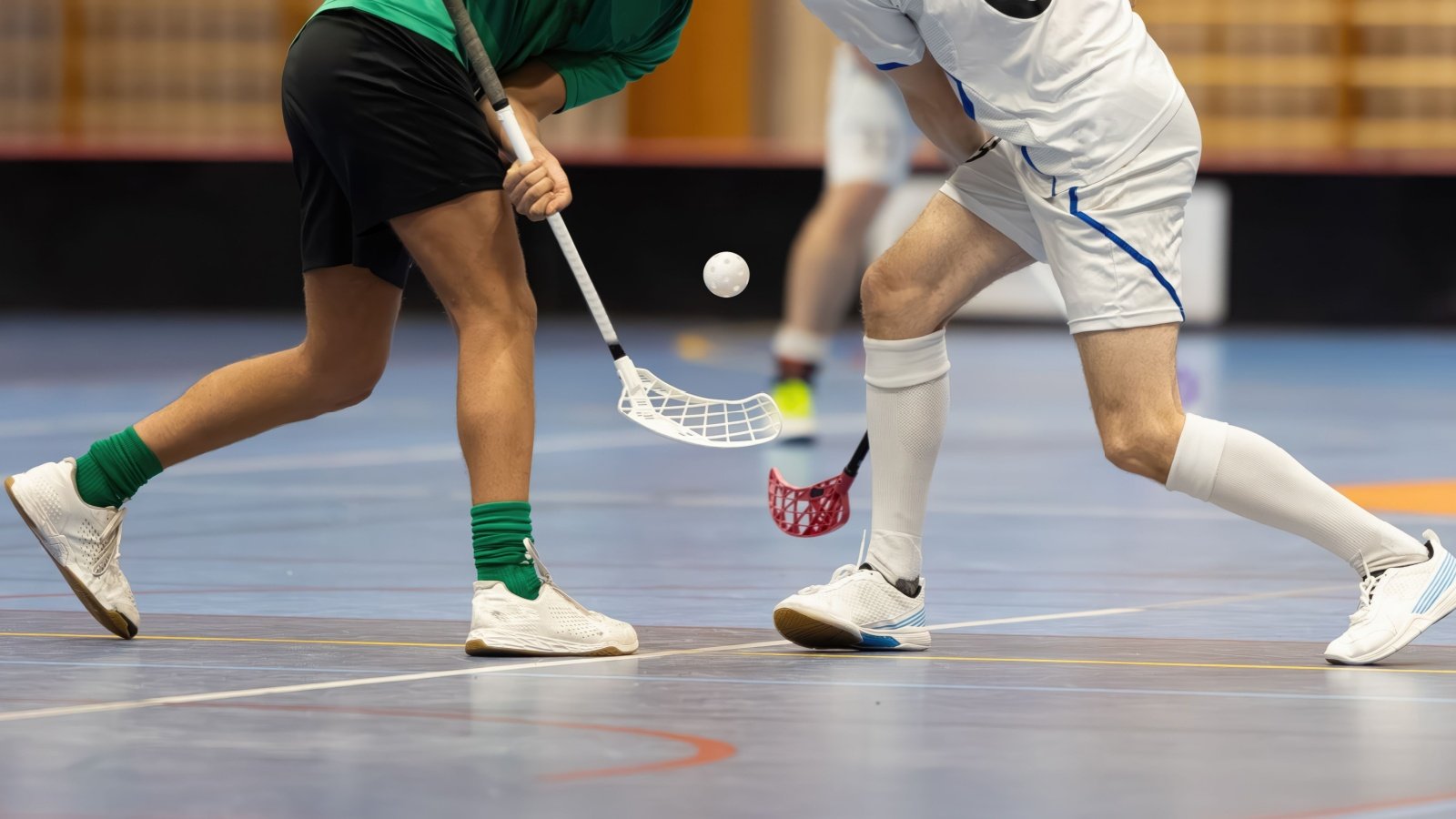
Floorball is an indoor team sport that is a type of floor hockey with five field players and a goalkeeper on each side. Originating in Sweden in the 1970s, the sport is known for its fast pace and agility. Players use lightweight sticks to maneuver a plastic ball with holes, aiming to score goals against their opponents.









Youre so cool! I dont suppose Ive learn anything like this before. So nice to search out somebody with some unique thoughts on this subject. realy thank you for starting this up. this website is one thing that’s needed on the net, someone with a bit of originality. useful job for bringing something new to the internet!
Nearly all of what you state is supprisingly precise and it makes me wonder the reason why I had not looked at this with this light before. Your article truly did turn the light on for me as far as this particular subject matter goes. However there is 1 point I am not really too cozy with and while I attempt to reconcile that with the actual core theme of your position, permit me see just what the rest of the readers have to say.Very well done.
After research a few of the weblog posts on your website now, and I truly like your way of blogging. I bookmarked it to my bookmark web site record and might be checking again soon. Pls try my web site as properly and let me know what you think.
Excellent beat ! I wish to apprentice whilst you amend your website, how can i subscribe for a blog site? The account aided me a applicable deal. I have been a little bit familiar of this your broadcast offered brilliant clear concept
It’s a pity you don’t have a donate button! I’d definitely donate to this superb blog! I guess for now i’ll settle for book-marking and adding your RSS feed to my Google account. I look forward to brand new updates and will talk about this site with my Facebook group. Talk soon!
Very efficiently written information. It will be helpful to anyone who utilizes it, including me. Keep doing what you are doing – i will definitely read more posts.
Excellent post. I was checking continuously this blog and I’m impressed! Extremely helpful information specially the last part 🙂 I care for such information much. I was seeking this certain information for a very long time. Thank you and best of luck.
I genuinely enjoy examining on this internet site, it contains superb posts. “Don’t put too fine a point to your wit for fear it should get blunted.” by Miguel de Cervantes.
I like this web blog very much so much excellent info .
Very good written article. It will be valuable to anyone who usess it, including myself. Keep up the good work – can’r wait to read more posts.
Wow! This could be one particular of the most helpful blogs We have ever arrive across on this subject. Basically Magnificent. I’m also a specialist in this topic therefore I can understand your effort.
You could certainly see your enthusiasm within the work you write. The world hopes for more passionate writers such as you who are not afraid to say how they believe. Always go after your heart.
Those are yours alright! . We at least need to get these people stealing images to start blogging! They probably just did a image search and grabbed them. They look good though!
You are a very clever person!
Good write-up, I¦m normal visitor of one¦s site, maintain up the nice operate, and It’s going to be a regular visitor for a long time.
I like your writing style really loving this internet site.
I conceive you have mentioned some very interesting points, regards for the post.
Magnificent website. Plenty of useful info here. I am sending it to several friends ans additionally sharing in delicious. And naturally, thanks in your sweat!
Its such as you read my mind! You seem to understand so much about this, such as you wrote the book in it or something. I think that you simply could do with a few to power the message home a bit, however other than that, that is fantastic blog. An excellent read. I will certainly be back.
I like this site its a master peace ! Glad I detected this on google .
I’ve learn a few excellent stuff here. Certainly worth bookmarking for revisiting. I wonder how much attempt you put to create this sort of excellent informative site.
As a Newbie, I am continuously searching online for articles that can aid me. Thank you
Wow that was odd. I just wrote an incredibly long comment but after I clicked submit my comment didn’t appear. Grrrr… well I’m not writing all that over again. Anyway, just wanted to say great blog!
I have learn a few good stuff here. Definitely worth bookmarking for revisiting. I wonder how much effort you place to make this sort of wonderful informative website.
I enjoy, lead to I discovered just what I used to be taking a look for. You have ended my four day lengthy hunt! God Bless you man. Have a nice day. Bye
It’s really a nice and useful piece of info. I am glad that you shared this helpful info with us. Please keep us up to date like this. Thank you for sharing.
Greetings from Colorado! I’m bored to death at work so I decided to check out your blog on my iphone during lunch break. I love the info you present here and can’t wait to take a look when I get home. I’m shocked at how quick your blog loaded on my cell phone .. I’m not even using WIFI, just 3G .. Anyways, very good site!
You completed a number of nice points there. I did a search on the topic and found nearly all folks will have the same opinion with your blog.
Howdy just wanted to give you a quick heads up. The words in your article seem to be running off the screen in Safari. I’m not sure if this is a format issue or something to do with web browser compatibility but I figured I’d post to let you know. The style and design look great though! Hope you get the problem fixed soon. Thanks
Wow that was strange. I just wrote an extremely long comment but after I clicked submit my comment didn’t appear. Grrrr… well I’m not writing all that over again. Anyway, just wanted to say excellent blog!
Regards for helping out, great information.
Its great as your other posts : D, regards for posting.
I like this internet site because so much utile material on here : D.
Hello! I just would like to give a huge thumbs up for the great info you have here on this post. I will be coming back to your blog for more soon.
I very happy to find this web site on bing, just what I was searching for : D likewise saved to favorites.
Keep working ,splendid job!
I know this if off topic but I’m looking into starting my own weblog and was curious what all is needed to get set up? I’m assuming having a blog like yours would cost a pretty penny? I’m not very internet savvy so I’m not 100 sure. Any recommendations or advice would be greatly appreciated. Thanks
Lovely just what I was looking for.Thanks to the author for taking his time on this one.
Some really fantastic info , Gladiola I found this.
Hello! I could have sworn I’ve been to this blog before but after browsing through some of the post I realized it’s new to me. Anyways, I’m definitely happy I found it and I’ll be book-marking and checking back frequently!
Fantastic web site. Lots of useful info here. I am sending it to some friends ans also sharing in delicious. And obviously, thanks for your sweat!
Great – I should certainly pronounce, impressed with your web site. I had no trouble navigating through all the tabs as well as related information ended up being truly simple to do to access. I recently found what I hoped for before you know it at all. Quite unusual. Is likely to appreciate it for those who add forums or something, site theme . a tones way for your customer to communicate. Nice task.
An interesting discussion is worth comment. I think that you should write more on this topic, it might not be a taboo subject but generally people are not enough to speak on such topics. To the next. Cheers
Its superb as your other posts : D, appreciate it for posting.
This is a very good tips especially to those new to blogosphere, brief and accurate information… Thanks for sharing this one. A must read article.
you’re really a good webmaster. The website loading speed is incredible. It seems that you are doing any unique trick. Also, The contents are masterpiece. you have done a wonderful job on this topic!
I am really impressed with your writing skills and also with the layout on your weblog. Is this a paid theme or did you modify it yourself? Either way keep up the nice quality writing, it’s rare to see a nice blog like this one nowadays..
Some genuinely nice and useful information on this website, besides I conceive the design contains fantastic features.
Can I just say what a relief to find someone who actually knows what theyre talking about on the internet. You definitely know how to bring an issue to light and make it important. More people need to read this and understand this side of the story. I cant believe youre not more popular because you definitely have the gift.
Normally I don’t read article on blogs, but I would like to say that this write-up very forced me to try and do it! Your writing style has been amazed me. Thanks, quite nice post.
hello!,I like your writing very much! share we communicate more about your post on AOL? I require an expert on this area to solve my problem. Maybe that’s you! Looking forward to see you.
Some really nice stuff on this web site, I enjoy it.
A lot of of the things you mention is supprisingly legitimate and that makes me ponder the reason why I hadn’t looked at this in this light before. This article really did turn the light on for me personally as far as this particular subject matter goes. Nonetheless at this time there is actually one issue I am not necessarily too cozy with so whilst I attempt to reconcile that with the actual central theme of the point, let me observe just what all the rest of your readers have to point out.Well done.
Generally I do not read post on blogs, but I wish to say that this write-up very forced me to try and do so! Your writing style has been amazed me. Thanks, very nice post.
Very interesting points you have remarked, thankyou for putting up. “Brass bands are all very well in their place – outdoors and several miles away.” by Sir Thomas Beecham.
Hi there! Do you use Twitter? I’d like to follow you if that would be okay. I’m absolutely enjoying your blog and look forward to new updates.
I like this blog so much, saved to my bookmarks. “Nostalgia isn’t what it used to be.” by Peter De Vries.
It’s really a nice and helpful piece of information. I am satisfied that you simply shared this helpful information with us. Please stay us informed like this. Thanks for sharing.
obviously like your web-site however you need to check the spelling on quite a few of your posts. A number of them are rife with spelling issues and I find it very bothersome to inform the truth however I will definitely come back again.
I’m really impressed with your writing abilities as well as with the structure for your blog. Is this a paid theme or did you modify it yourself? Either way keep up the excellent high quality writing, it is uncommon to see a nice weblog like this one these days..
Hey there, You have performed an incredible job. I’ll definitely digg it and individually suggest to my friends. I’m confident they will be benefited from this site.
I do love the manner in which you have framed this matter and it does supply me personally some fodder for thought. On the other hand, from what precisely I have witnessed, I simply just wish as the actual remarks pile on that individuals stay on issue and not embark on a soap box involving some other news of the day. All the same, thank you for this superb piece and although I do not really agree with the idea in totality, I respect your point of view.
Only wanna comment on few general things, The website design and style is perfect, the content is really superb. “Believe those who are seeking the truth. Doubt those who find it.” by Andre Gide.
Some truly superb information, Glad I observed this. “Childhood is that wonderful time when all you need to do to lose weight is take a bath.” by Joe Moore.
Very interesting topic, regards for putting up.
Very good written story. It will be supportive to everyone who employess it, including myself. Keep up the good work – can’r wait to read more posts.
Howdy! This is kind of off topic but I need some guidance from an established blog. Is it tough to set up your own blog? I’m not very techincal but I can figure things out pretty quick. I’m thinking about making my own but I’m not sure where to begin. Do you have any tips or suggestions? With thanks
I like this internet site because so much utile material on here : D.
What’s Happening i am new to this, I stumbled upon this I’ve found It absolutely helpful and it has helped me out loads. I hope to contribute & assist other users like its helped me. Good job.
This is the proper weblog for anybody who needs to search out out about this topic. You understand a lot its nearly exhausting to argue with you (not that I really would need…HaHa). You positively put a brand new spin on a subject thats been written about for years. Nice stuff, just great!
I conceive this internet site has some real superb info for everyone. “The foundation of every state is the education of its youth.” by Diogenes.
This really answered my drawback, thanks!
Hello.This article was extremely motivating, particularly because I was browsing for thoughts on this issue last Monday.
What’s Taking place i am new to this, I stumbled upon this I’ve found It positively useful and it has helped me out loads. I am hoping to give a contribution & help other users like its aided me. Good job.
Great post. I am facing a couple of these problems.
Unquestionably consider that that you said. Your favourite justification seemed to be on the web the easiest factor to bear in mind of. I say to you, I certainly get annoyed even as people consider issues that they just don’t realize about. You managed to hit the nail upon the highest as neatly as outlined out the entire thing with no need side effect , other folks can take a signal. Will likely be back to get more. Thank you
Wow, fantastic blog layout! How long have you been blogging for? you made blogging look easy. The overall look of your site is wonderful, let alone the content!
Hi! Do you use Twitter? I’d like to follow you if that would be okay. I’m absolutely enjoying your blog and look forward to new posts.
Enjoyed reading this, very good stuff, thankyou.
What i do not realize is in reality how you are not really much more neatly-liked than you might be right now. You’re very intelligent. You know thus considerably when it comes to this subject, produced me individually consider it from so many numerous angles. Its like women and men aren’t interested except it is something to accomplish with Lady gaga! Your individual stuffs excellent. At all times take care of it up!
I just couldn’t depart your site before suggesting that I really loved the usual info an individual provide for your guests? Is gonna be again frequently to check out new posts
Hey there! I know this is kinda off topic but I was wondering which blog platform are you using for this site? I’m getting tired of WordPress because I’ve had problems with hackers and I’m looking at alternatives for another platform. I would be great if you could point me in the direction of a good platform.
Wow! This can be one particular of the most helpful blogs We have ever arrive across on this subject. Actually Fantastic. I am also a specialist in this topic so I can understand your effort.
I regard something really special in this web site.
Heya! I just wanted to ask if you ever have any issues with hackers? My last blog (wordpress) was hacked and I ended up losing several weeks of hard work due to no backup. Do you have any solutions to prevent hackers?
Greetings! Very helpful advice on this article! It is the little changes that make the biggest changes. Thanks a lot for sharing!
The other day, while I was at work, my sister stole my apple ipad and tested to see if it can survive a thirty foot drop, just so she can be a youtube sensation. My apple ipad is now destroyed and she has 83 views. I know this is totally off topic but I had to share it with someone!
It¦s actually a cool and helpful piece of information. I¦m happy that you shared this helpful information with us. Please keep us informed like this. Thanks for sharing.
I have been browsing online more than 3 hours today, yet I never found any interesting article like yours. It’s pretty worth enough for me. In my opinion, if all website owners and bloggers made good content as you did, the web will be a lot more useful than ever before.
I have read some good stuff here. Certainly value bookmarking for revisiting. I wonder how a lot effort you set to make the sort of magnificent informative site.
Some really excellent posts on this website, thank you for contribution. “Careful. We don’t want to learn from this.” by Bill Watterson.
Everyone loves what you guys are usually up too. Such clever work and reporting! Keep up the very good works guys I’ve included you guys to blogroll.
I think this website holds some rattling excellent info for everyone : D.
Yay google is my king aided me to find this great website ! .
I truly enjoy looking through on this website , it contains great posts. “The longing to produce great inspirations didn’t produce anything but more longing.” by Sophie Kerr.
There are certainly a number of particulars like that to take into consideration. That could be a great level to bring up. I provide the ideas above as general inspiration however clearly there are questions like the one you convey up where the most important thing can be working in trustworthy good faith. I don?t know if best practices have emerged round things like that, however I am sure that your job is clearly identified as a good game. Each boys and girls feel the impression of only a moment’s pleasure, for the remainder of their lives.
I am often to blogging and i really appreciate your content. The article has really peaks my interest. I am going to bookmark your site and keep checking for new information.
Thanks a bunch for sharing this with all of us you actually know what you are talking about! Bookmarked. Please also visit my web site =). We could have a link exchange contract between us!
I’m curious to find out what blog system you have been utilizing? I’m experiencing some minor security issues with my latest website and I would like to find something more safeguarded. Do you have any recommendations?
Superb blog! Do you have any tips and hints for aspiring writers? I’m planning to start my own site soon but I’m a little lost on everything. Would you propose starting with a free platform like WordPress or go for a paid option? There are so many choices out there that I’m completely overwhelmed .. Any ideas? Kudos!
I’ve been surfing online more than three hours as of late, but I by no means discovered any attention-grabbing article like yours. It is pretty price sufficient for me. In my opinion, if all web owners and bloggers made excellent content as you probably did, the internet will be much more useful than ever before.
Its superb as your other blog posts : D, thankyou for putting up.
magnificent post, very informative. I wonder why the other experts of this sector do not notice this. You must continue your writing. I am confident, you’ve a great readers’ base already!
I am always browsing online for ideas that can help me. Thanks!
Some truly nice stuff on this internet site, I enjoy it.
Great site. A lot of useful info here. I am sending it to several friends ans also sharing in delicious. And obviously, thank you to your effort!
I have been surfing online more than 3 hours as of late, but I never discovered any fascinating article like yours. It’s lovely value sufficient for me. In my view, if all website owners and bloggers made excellent content material as you probably did, the net can be much more helpful than ever before.
I’ve read some just right stuff here. Certainly price bookmarking for revisiting. I wonder how much attempt you put to create this sort of great informative website.
I know this if off topic but I’m looking into starting my own weblog and was curious what all is required to get setup? I’m assuming having a blog like yours would cost a pretty penny? I’m not very internet savvy so I’m not 100 certain. Any recommendations or advice would be greatly appreciated. Kudos
Pretty section of content. I just stumbled upon your website and in accession capital to assert that I acquire actually enjoyed account your blog posts. Any way I’ll be subscribing to your feeds and even I achievement you access consistently quickly.
I am impressed with this internet site, rattling I am a fan.
It’s the best time to make some plans for the longer term and it is time to be happy. I have learn this publish and if I may I want to suggest you few attention-grabbing things or suggestions. Perhaps you could write next articles regarding this article. I wish to learn even more things approximately it!
Hello there, just became aware of your blog through Google, and found that it is truly informative. I’m going to watch out for brussels. I’ll appreciate if you continue this in future. A lot of people will be benefited from your writing. Cheers!
I have been browsing online greater than three hours nowadays, yet I never discovered any interesting article like yours. It is lovely worth sufficient for me. In my opinion, if all site owners and bloggers made good content as you probably did, the web will probably be much more useful than ever before.
Wow! Thank you! I always needed to write on my website something like that. Can I implement a portion of your post to my website?
Aumente o público das suas transmissões! Compre visualizações para live no YouTube e ganhe mais engajamento, credibilidade e alcance na plataforma.
Rattling excellent visual appeal on this site, I’d rate it 10 10.
I love how user-friendly and intuitive everything feels.
You made some nice points there. I did a search on the subject and found most folks will go along with with your blog.
I like this weblog very much, Its a real nice place to read and get information. “It is impossible for a man to learn what he thinks he already knows.” by Epictetus.
Woah! I’m really enjoying the template/theme of this website. It’s simple, yet effective. A lot of times it’s hard to get that “perfect balance” between superb usability and appearance. I must say that you’ve done a awesome job with this. Also, the blog loads extremely fast for me on Opera. Excellent Blog!
Do you have a spam problem on this site; I also am a blogger, and I was wanting to know your situation; many of us have developed some nice practices and we are looking to swap strategies with other folks, be sure to shoot me an email if interested.
This site truly stands out as a great example of quality web design and performance.
I do agree with all of the ideas you have presented in your post. They are really convincing and will certainly work. Still, the posts are too quick for beginners. May just you please prolong them a bit from subsequent time? Thanks for the post.
Incredible! This blog looks just like my old one! It’s on a completely different subject but it has pretty much the same layout and design. Wonderful choice of colors!
I’ve been browsing on-line greater than 3 hours today, but I never found any interesting article like yours. It’s lovely value sufficient for me. Personally, if all web owners and bloggers made good content material as you did, the net can be much more useful than ever before.
I think this web site has got some really great info for everyone. “It is easy enough to define what the Commonwealth is not. Indeed this is quite a popular pastime.” by Elizabeth II.
Greetings from Florida! I’m bored to tears at work so I decided to check out your website on my iphone during lunch break. I love the information you present here and can’t wait to take a look when I get home. I’m shocked at how quick your blog loaded on my mobile .. I’m not even using WIFI, just 3G .. Anyhow, awesome site!
you’re really a good webmaster. The website loading speed is incredible. It seems that you are doing any unique trick. Furthermore, The contents are masterwork. you have done a fantastic job on this topic!
It provides an excellent user experience from start to finish.
Throughout this grand scheme of things you actually get an A with regard to effort and hard work. Where you misplaced everybody ended up being in the details. You know, it is said, details make or break the argument.. And that could not be more accurate right here. Having said that, permit me reveal to you just what exactly did do the job. Your authoring is really powerful which is probably why I am making the effort in order to comment. I do not really make it a regular habit of doing that. Secondly, whilst I can easily notice a jumps in reason you come up with, I am not certain of just how you seem to connect your ideas which in turn produce your final result. For now I will, no doubt subscribe to your point but wish in the foreseeable future you connect your dots better.
Thanks for the good writeup. It in reality used to be a enjoyment account it. Look complicated to more brought agreeable from you! By the way, how can we be in contact?
The content is well-organized and highly informative.
I love how user-friendly and intuitive everything feels.
I would like to thank you for the efforts you’ve put in writing this website. I’m hoping the same high-grade web site post from you in the upcoming as well. Actually your creative writing abilities has encouraged me to get my own web site now. Actually the blogging is spreading its wings rapidly. Your write up is a great example of it.
There is noticeably a bundle to identify about this. I think you made some nice points in features also.
As a Newbie, I am permanently browsing online for articles that can help me. Thank you
I’m really impressed by the speed and responsiveness.
Hey There. I found your blog using msn. This is a very well written article. I’ll be sure to bookmark it and come back to read more of your useful information. Thanks for the post. I will definitely return.
Having read this I thought it was very informative. I appreciate you taking the time and effort to put this article together. I once again find myself spending way to much time both reading and commenting. But so what, it was still worth it!
I love gathering useful info, this post has got me even more info! .
I cling on to listening to the reports speak about getting free online grant applications so I have been looking around for the most excellent site to get one. Could you tell me please, where could i acquire some?
You have remarked very interesting points! ps nice web site.
Good V I should certainly pronounce, impressed with your website. I had no trouble navigating through all the tabs as well as related information ended up being truly simple to do to access. I recently found what I hoped for before you know it in the least. Reasonably unusual. Is likely to appreciate it for those who add forums or anything, website theme . a tones way for your client to communicate. Nice task..
The Ice Water Hack has gained popularity as a simple yet effective method for boosting metabolism and promoting weight loss.
This web site can be a walk-by for the entire data you wished about this and didn’t know who to ask. Glimpse here, and also you’ll definitely uncover it.
The design and usability are top-notch, making everything flow smoothly.
Magnificent goods from you, man. I’ve understand your stuff previous to and you’re just extremely fantastic. I actually like what you have acquired here, certainly like what you’re stating and the way in which you say it. You make it entertaining and you still care for to keep it sensible. I can not wait to read much more from you. This is really a terrific site.
PrimeBiome is a dietary supplement designed to support gut health by promoting a balanced microbiome, enhancing digestion, and boosting overall well-being.
The content is well-organized and highly informative.
Rattling clean internet site, appreciate it for this post.
naturally like your website however you need to check the spelling on quite a few of your posts. A number of them are rife with spelling problems and I find it very troublesome to inform the truth on the other hand I will surely come again again.
I love how user-friendly and intuitive everything feels.
Of course, what a magnificent blog and educative posts, I definitely will bookmark your website.Best Regards!
This site truly stands out as a great example of quality web design and performance.
Good day! This is kind of off topic but I need some guidance from an established blog. Is it hard to set up your own blog? I’m not very techincal but I can figure things out pretty quick. I’m thinking about making my own but I’m not sure where to start. Do you have any tips or suggestions? Thank you
Greetings! I know this is kind of off topic but I was wondering which blog platform are you using for this site? I’m getting tired of WordPress because I’ve had problems with hackers and I’m looking at options for another platform. I would be fantastic if you could point me in the direction of a good platform.
Some genuinely wonderful posts on this web site, regards for contribution. “Once, power was considered a masculine attribute. In fact, power has no sex.” by Katharine Graham.
Today, I went to the beachfront with my children. I found a sea shell and gave it to my 4 year old daughter and said “You can hear the ocean if you put this to your ear.” She put the shell to her ear and screamed. There was a hermit crab inside and it pinched her ear. She never wants to go back! LoL I know this is entirely off topic but I had to tell someone!
I have recently started a site, the information you provide on this website has helped me greatly. Thanks for all of your time & work.
Its like you learn my mind! You seem to understand a lot about this, like you wrote the book in it or something. I feel that you could do with a few p.c. to drive the message house a little bit, however instead of that, this is fantastic blog. An excellent read. I will definitely be back.
Your place is valueble for me. Thanks!…
Hey, you used to write fantastic, but the last several posts have been kinda boringK I miss your great writings. Past few posts are just a little out of track! come on!
I like the valuable info you provide in your articles. I’ll bookmark your blog and check again here frequently. I am quite certain I will learn many new stuff right here! Good luck for the next!
My partner and I stumbled over here by a different web address and thought I may as well check things out. I like what I see so i am just following you. Look forward to looking over your web page repeatedly.
Christopher Nolan’s storytelling is always mind-blowing. Every movie feels like a masterpiece, and the way he plays with time and perception is just genius.
I am no longer sure where you’re getting your info, however great topic. I needs to spend some time studying more or understanding more. Thanks for magnificent information I used to be searching for this info for my mission.
I’m not sure why but this blog is loading very slow for me. Is anyone else having this issue or is it a issue on my end? I’ll check back later on and see if the problem still exists.
Consistency is key in fitness. You won’t see results overnight, but every workout counts. The small efforts add up over time and create real change.
There is clearly a bundle to know about this. I believe you made certain nice points in features also.
Live concerts have a special magic. No recording can ever capture that raw energy of the crowd and the artist performing in the moment.
I am glad for writing to make you be aware of what a incredible discovery my girl enjoyed reading yuor web blog. She realized a wide variety of pieces, not to mention what it is like to possess a very effective helping heart to have other individuals effortlessly have an understanding of several very confusing issues. You truly did more than visitors’ expected results. I appreciate you for displaying such great, trustworthy, educational and unique tips on your topic to Kate.
Hiya, I am really glad I have found this information. Nowadays bloggers publish only about gossips and internet and this is really irritating. A good site with interesting content, that’s what I need. Thanks for keeping this web-site, I’ll be visiting it. Do you do newsletters? Can’t find it.
Japan is definitely on my bucket list! The mix of tradition and modernity is fascinating, and the food alone is enough reason to visit.
Really great info can be found on website.
I’ll right away grab your rss as I can not find your email subscription link or e-newsletter service. Do you’ve any? Kindly let me know in order that I could subscribe. Thanks.
AI is evolving so fast! I can’t wait to see how it transforms our daily lives in the next decade. The possibilities are endless, from automation to medical advancements.
I am lucky that I discovered this website, just the right info that I was looking for! .
Hiya, I’m really glad I have found this information. Nowadays bloggers publish only about gossips and web and this is really frustrating. A good site with exciting content, that is what I need. Thanks for keeping this web-site, I’ll be visiting it. Do you do newsletters? Cant find it.
Great line up. We will be linking to this great article on our site. Keep up the good writing.
Some truly prime content on this website , bookmarked.
of course like your web-site but you have to take a look at the spelling on quite a few of your posts. A number of them are rife with spelling issues and I to find it very troublesome to inform the truth then again I¦ll surely come back again.
You made several good points there. I did a search on the matter and found mainly persons will go along with with your blog.
It’s appropriate time to make some plans for the long run and it’s time to be happy. I’ve read this put up and if I may I desire to recommend you few attention-grabbing things or suggestions. Perhaps you can write next articles referring to this article. I want to learn more things about it!
Hiya, I am really glad I’ve found this information. Nowadays bloggers publish just about gossips and net and this is really frustrating. A good web site with interesting content, this is what I need. Thanks for keeping this web site, I’ll be visiting it. Do you do newsletters? Can’t find it.
Hello! Do you know if they make any plugins to assist with SEO? I’m trying to get my blog to rank for some targeted keywords but I’m not seeing very good gains. If you know of any please share. Cheers!
The following time I learn a weblog, I hope that it doesnt disappoint me as much as this one. I imply, I know it was my option to read, however I actually thought youd have something attention-grabbing to say. All I hear is a bunch of whining about one thing that you would repair if you werent too busy looking for attention.
There is noticeably a bundle to know about this. I assume you made certain nice points in features also.
I’ve recently started a blog, the info you provide on this website has helped me tremendously. Thanks for all of your time & work. “Money is power, freedom, a cushion, the root of al evil, the sum of all blessings.” by Carl Sandburg.
I was just searching for this info for some time. After six hours of continuous Googleing, finally I got it in your website. I wonder what’s the lack of Google strategy that don’t rank this kind of informative sites in top of the list. Generally the top sites are full of garbage.
Thank you for another fantastic article. Where else could anyone get that kind of info in such an ideal way of writing? I’ve a presentation next week, and I’m on the look for such info.
Some genuinely nice and utilitarian info on this site, also I think the design contains great features.
I’ve been surfing online greater than 3 hours these days, but I never discovered any attention-grabbing article like yours. It’s beautiful value sufficient for me. Personally, if all webmasters and bloggers made good content material as you probably did, the internet will probably be a lot more helpful than ever before.
Good day very nice site!! Guy .. Beautiful .. Wonderful .. I will bookmark your website and take the feeds also…I am happy to search out numerous helpful information here within the put up, we want work out more strategies on this regard, thank you for sharing. . . . . .
I have been absent for some time, but now I remember why I used to love this web site. Thanks, I will try and check back more often. How frequently you update your web site?
Some genuinely nice stuff on this internet site, I love it.
It’s in reality a nice and helpful piece of information. I’m satisfied that you simply shared this helpful info with us. Please stay us informed like this. Thank you for sharing.
At this time it appears like Drupal is the preferred blogging platform available right now. (from what I’ve read) Is that what you’re using on your blog?
We stumbled over here coming from a different web page and thought I may as well check things out. I like what I see so i am just following you. Look forward to exploring your web page again.
I am glad to be one of many visitors on this great website (:, thanks for posting.
Thanks for the post, can I set it up so I get an update sent in an email every time you write a fresh article?
Good – I should definitely pronounce, impressed with your site. I had no trouble navigating through all tabs and related information ended up being truly simple to do to access. I recently found what I hoped for before you know it at all. Quite unusual. Is likely to appreciate it for those who add forums or something, web site theme . a tones way for your customer to communicate. Nice task..
Hello! I just would like to give a huge thumbs up for the great info you have here on this post. I will be coming back to your blog for more soon.
Great tremendous issues here. I am very satisfied to see your article. Thank you a lot and i am taking a look ahead to contact you. Will you kindly drop me a e-mail?
I’d have to examine with you here. Which is not one thing I usually do! I take pleasure in reading a post that may make folks think. Additionally, thanks for permitting me to comment!
Thanks a bunch for sharing this with all of us you actually know what you’re talking about! Bookmarked. Kindly also visit my website =). We could have a link exchange contract between us!
Excellent website you have here but I was wondering if you knew of any user discussion forums that cover the same topics talked about here? I’d really like to be a part of group where I can get opinions from other knowledgeable people that share the same interest. If you have any suggestions, please let me know. Thanks a lot!
Howdy are using WordPress for your blog platform? I’m new to the blog world but I’m trying to get started and set up my own. Do you require any html coding expertise to make your own blog? Any help would be greatly appreciated!
Respect to article author, some fantastic entropy.
You got a very superb website, Gladiolus I noticed it through yahoo.
PrimeBiome is a dietary supplement designed to support gut health by promoting a balanced microbiome, enhancing digestion, and boosting overall well-being.
hey there and thanks to your information – I have certainly picked up something new from right here. I did on the other hand expertise a few technical points using this web site, since I experienced to reload the website many instances previous to I could get it to load correctly. I had been pondering in case your hosting is OK? Not that I’m complaining, but slow loading cases instances will often affect your placement in google and can damage your high quality ranking if ads and ***********|advertising|advertising|advertising and *********** with Adwords. Well I am adding this RSS to my email and can glance out for much more of your respective fascinating content. Ensure that you replace this once more very soon..
It is best to take part in a contest for the most effective blogs on the web. I will recommend this website!
Lovely just what I was looking for.Thanks to the author for taking his time on this one.
Good day! Would you mind if I share your blog with my zynga group? There’s a lot of people that I think would really appreciate your content. Please let me know. Many thanks
PrimeBiome is a dietary supplement designed to support gut health by promoting a balanced microbiome, enhancing digestion, and boosting overall well-being.
I have been surfing online more than 3 hours these days, yet I never discovered any interesting article like yours. It is beautiful value enough for me. In my opinion, if all web owners and bloggers made just right content material as you did, the internet shall be a lot more useful than ever before.
Thank you for sharing with us, I believe this website genuinely stands out : D.
Great amazing issues here. I am very glad to look your article. Thank you so much and i’m having a look ahead to touch you. Will you please drop me a mail?
Thanx for the effort, keep up the good work Great work, I am going to start a small Blog Engine course work using your site I hope you enjoy blogging with the popular BlogEngine.net.Thethoughts you express are really awesome. Hope you will right some more posts.
پارتیشن سازه ، تولید کننده انواع پارتیشن اداری و سایر دکوراسیون اداری، با حدود سه دهه سابقه. با افتخار مجرئ انواع پروژهها در اکثریت شرکتها و ادارات. سفارش مستقیم از تولید کننده بدون واسطه
Those are yours alright! . We at least need to get these people stealing images to start blogging! They probably just did a image search and grabbed them. They look good though!
Nitric Boost Ultra is a dietary supplement designed to enhance cardiovascular health, energy levels, and endurance by increasing nitric oxide (NO) production in the body.
I got what you mean , thankyou for posting.Woh I am lucky to find this website through google. “Delay is preferable to error.” by Thomas Jefferson.
It’s the best time to make a few plans for the future and it is time to be happy. I’ve read this post and if I may I want to counsel you some fascinating things or tips. Maybe you can write subsequent articles referring to this article. I desire to read more things approximately it!
I don’t even know how I ended up right here, however I assumed this put up used to be good. I do not understand who you are however certainly you’re going to a well-known blogger in case you aren’t already 😉 Cheers!
Mitolyn is a cutting-edge natural dietary supplement designed to support effective weight loss and improve overall wellness.
My spouse and I stumbled over here coming from a different web address and thought I should check things out. I like what I see so now i’m following you. Look forward to looking at your web page for a second time.
Hello there, I found your website by the use of Google even as searching for a comparable subject, your web site got here up, it appears great. I’ve bookmarked it in my google bookmarks.
I don’t even know the way I finished up right here, however I thought this submit was good. I do not recognize who you’re however certainly you are going to a well-known blogger if you happen to aren’t already 😉 Cheers!
I have not checked in here for a while since I thought it was getting boring, but the last few posts are good quality so I guess I will add you back to my daily bloglist. You deserve it my friend 🙂
I beloved up to you’ll receive carried out right here. The cartoon is tasteful, your authored subject matter stylish. nevertheless, you command get got an impatience over that you would like be delivering the following. unwell indisputably come further earlier again as exactly the similar just about very ceaselessly inside of case you protect this hike.
Real nice design and wonderful subject material, hardly anything else we need : D.
There are actually lots of details like that to take into consideration. That may be a great level to convey up. I provide the ideas above as normal inspiration however clearly there are questions just like the one you bring up where an important thing will probably be working in trustworthy good faith. I don?t know if finest practices have emerged around things like that, however I’m positive that your job is clearly recognized as a fair game. Each girls and boys feel the influence of just a second’s pleasure, for the remainder of their lives.
With havin so much content do you ever run into any issues of plagorism or copyright violation? My site has a
lott of compleely unique content I’ve either authored myself or outsourced but it seems a
lot of it is popping it up all over the internet without my authorization.
Do you know any ways to help reduce content from beng stolen? I’d definitely appreciate
it. https://Menbehealth.wordpress.com/
I’m not sure where you’re getting your info, but great topic. I needs to spend some time learning much more or understanding more. Thanks for excellent information I was looking for this info for my mission.
It’s actually a nice and useful piece of info. I’m satisfied that you simply shared this useful info with us. Please keep us up to date like this. Thanks for sharing.
Thanks for sharing excellent informations. Your site is so cool. I’m impressed by the details that you¦ve on this web site. It reveals how nicely you understand this subject. Bookmarked this website page, will come back for more articles. You, my friend, ROCK! I found simply the info I already searched all over the place and simply could not come across. What a perfect website.
I do not even know how I ended up here, but I thought this post was great. I don’t know who you are but certainly you’re going to a famous blogger if you aren’t already 😉 Cheers!
You actually make it seem really easy with your presentation but I in finding this topic to be actually one thing that I believe I would by no means understand. It sort of feels too complex and very wide for me. I am looking forward for your subsequent post, I’ll attempt to get the hold of it!
I loved as much as you’ll receive carried out right here. The sketch is tasteful, your authored material stylish. nonetheless, you command get bought an edginess over that you wish be delivering the following. unwell unquestionably come more formerly again as exactly the same nearly very often inside case you shield this hike.
I have been exploring for a bit for any high quality articles or blog posts on this sort of area . Exploring in Yahoo I at last stumbled upon this site. Studying this information So i am glad to exhibit that I’ve an incredibly excellent uncanny feeling I came upon just what I needed. I so much without a doubt will make certain to don?¦t forget this website and give it a glance regularly.
Only wanna say that this is invaluable, Thanks for taking your time to write this.
you may have a terrific blog right here! would you prefer to make some invite posts on my weblog?
I really like your blog.. very nice colors & theme. Did you make this website yourself or did you hire someone to do it for you? Plz respond as I’m looking to design my own blog and would like to know where u got this from. cheers
Hiya, I’m really glad I’ve found this info. Today bloggers publish just about gossips and web and this is actually irritating. A good blog with interesting content, this is what I need. Thanks for keeping this site, I will be visiting it. Do you do newsletters? Cant find it.
Hello my loved one! I want to say that this article is awesome, nice written and come with almost all important infos. I would like to peer more posts like this .
Very nice post. I just stumbled upon your weblog and wanted to say that I have truly enjoyed surfing around your blog posts. In any case I will be subscribing to your rss feed and I hope you write again soon!
I am glad for commenting to make you know what a notable experience my wife’s child developed visiting your blog. She mastered plenty of pieces, which include what it’s like to have a marvelous helping style to have men and women just grasp some hard to do subject areas. You really surpassed people’s expected results. Thanks for displaying such practical, safe, explanatory and as well as cool tips about the topic to Sandra.
I truly enjoy reading through on this website, it holds wonderful blog posts. “Never fight an inanimate object.” by P. J. O’Rourke.
You have noted very interesting points! ps nice website.
I was looking through some of your posts on this website and I conceive this website is very instructive! Keep posting.
I gotta favorite this site it seems invaluable very helpful
I gotta favorite this site it seems very beneficial handy
Unquestionably believe that which you stated. Your favorite justification appeared to be on the net the easiest thing to be aware of. I say to you, I certainly get irked while people think about worries that they just don’t know about. You managed to hit the nail upon the top as well as defined out the whole thing without having side effect , people could take a signal. Will likely be back to get more. Thanks
Thank you a lot for sharing this with all folks you really realize what you’re talking approximately! Bookmarked. Kindly also visit my web site =). We could have a hyperlink trade agreement between us!
I was reading some of your content on this website and I believe this site is rattling informative ! Keep on putting up.
Hello, Neat post. There is a problem together with your web site in web explorer, might test thisK IE nonetheless is the market chief and a huge part of other people will miss your great writing because of this problem.
We’re a group of volunteers and starting a new scheme in our community. Your web site offered us with valuable info to work on. You’ve done a formidable job and our entire community will be grateful to you.
hello there and thank you for your information – I have definitely picked up anything new from right here. I did however expertise a few technical points using this site, as I experienced to reload the site a lot of times previous to I could get it to load correctly. I had been wondering if your web host is OK? Not that I am complaining, but slow loading instances times will often affect your placement in google and could damage your quality score if advertising and marketing with Adwords. Anyway I’m adding this RSS to my e-mail and can look out for a lot more of your respective interesting content. Make sure you update this again very soon..
In fact no matter if someone doesn’t know after that its up to other people that they will help, so here it happens.
The subsequent time I learn a blog, I hope that it doesnt disappoint me as much as this one. I mean, I know it was my option to read, however I truly thought youd have something attention-grabbing to say. All I hear is a bunch of whining about one thing that you would fix when you werent too busy searching for attention.
I’d incessantly want to be update on new blog posts on this site, saved to favorites! .
Heya this is kinda of off topic but I was wanting
to know if blogs use WYSIWYG editors or if you have to
manually code with HTML. I’m starting a blog soon but have no
coding experience so I wanted to get guidance from someone with experience.
Any help would be greatly appreciated!
Hurrah, that’s what I was seeking for, what a stuff!
present here at this weblog, thanks admin of this web
site.
Very efficiently written story. It will be beneficial to anybody who employess it, as well as me. Keep up the good work – i will definitely read more posts.
Attractive element of content. I simply stumbled upon your website and in accession capital to say that I acquire in fact loved account your weblog posts. Any way I’ll be subscribing in your augment or even I success you get right of entry to constantly quickly.
KANTORBOLA adalah platform resmi yang menawarkan berbagai permainan slot online, termasuk slot Mahjong Scatter Hitam yang dikembangkan oleh PG Soft.
There is noticeably a bundle to know about this. I assume you made certain nice points in features also.